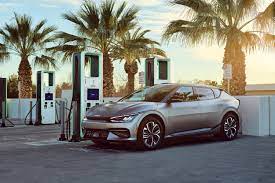
carbon
Reducing carbon emissions to achieve net zero is essential for addressing climate change. Achieving net zero means balancing the amount of carbon dioxide emitted with the amount removed. This goal is challenging, but through effective steps and collective effort, it can be accomplished. The following strategies provide practical and innovative solutions to reduce carbon emissions and help achieve net zero.
One key step towards net zero is transitioning to renewable energy sources. Fossil fuels, such as coal, oil, and natural gas, are the biggest contributors to carbon emissions. By using renewable energy sources like solar, wind, and hydropower, we can significantly reduce reliance on these harmful fuels. Solar and wind energy are abundant and clean alternatives. Many countries, including India and Germany, are investing in these sources to reduce their carbon footprint.
Energy efficiency is also critical for reducing emissions. Improving efficiency means using less energy to achieve the same results. In homes and buildings, this can be done by installing better insulation, using energy-efficient lighting like LED bulbs, and adopting smart energy systems. Industries can upgrade their machinery and production processes to be more energy-efficient, which reduces their carbon output.
Decarbonizing the transportation sector is another key step. Cars, buses, trains, airplanes, and ships are major sources of carbon emissions. Switching to electric vehicles (EVs) can make a big difference. EVs produce no emissions while running, especially when charged with renewable energy. Governments can encourage EV use by offering subsidies and improving charging infrastructure. Making public transport systems more efficient and electric can also reduce emissions.
Nature-based solutions play an essential role in achieving net zero emissions. Trees and plants absorb carbon dioxide through photosynthesis. Protecting forests and planting new trees can help remove carbon from the atmosphere. Reforestation projects and preserving mangroves and wetlands are effective strategies. Sustainable agriculture practices, such as crop rotation, can further support carbon reduction efforts.
Technology offers new solutions for reducing and capturing carbon emissions. Carbon capture and storage captures carbon dioxide from power plants and factories before it enters the atmosphere. This captured carbon can be stored underground or used to create useful products. Direct air capture is another promising technology that removes carbon dioxide directly from the air.
Waste management and adopting a circular economy are also vital for reducing emissions. In a circular economy, resources are reused, recycled, and repurposed to reduce waste. Recycling materials like paper, plastic, glass, and metal lowers the need for producing new materials. Reducing plastic use and encouraging composting are practical ways to manage waste and cut emissions.
Government policies and international cooperation are essential for achieving net zero. Governments can introduce laws that limit carbon emissions, offer incentives for renewable energy, and support research into new technologies. International agreements like the Paris Climate Agreement encourage countries to work together and set emission targets. Businesses also play a role by adopting sustainable practices and setting net zero goals.
Individuals can contribute to net zero goals by making changes in their daily lives. Using energy-efficient appliances, reducing electricity usage, using public transportation, and supporting sustainable products help reduce carbon emissions. Reducing meat consumption and avoiding food waste can also lower personal carbon footprints.
In conclusion, achieving net zero carbon emissions is challenging but necessary to fight climate change. By transitioning to renewable energy, improving energy efficiency, decarbonizing transportation, protecting nature, using advanced technologies, managing waste, and supporting government policies, we can move closer to a sustainable future. Everyone has a role to play, and together we can create a healthier planet for future generations.
By: Prathyush Venkatesh
Write and Win: Participate in Creative writing Contest & International Essay Contest and win fabulous prizes.


